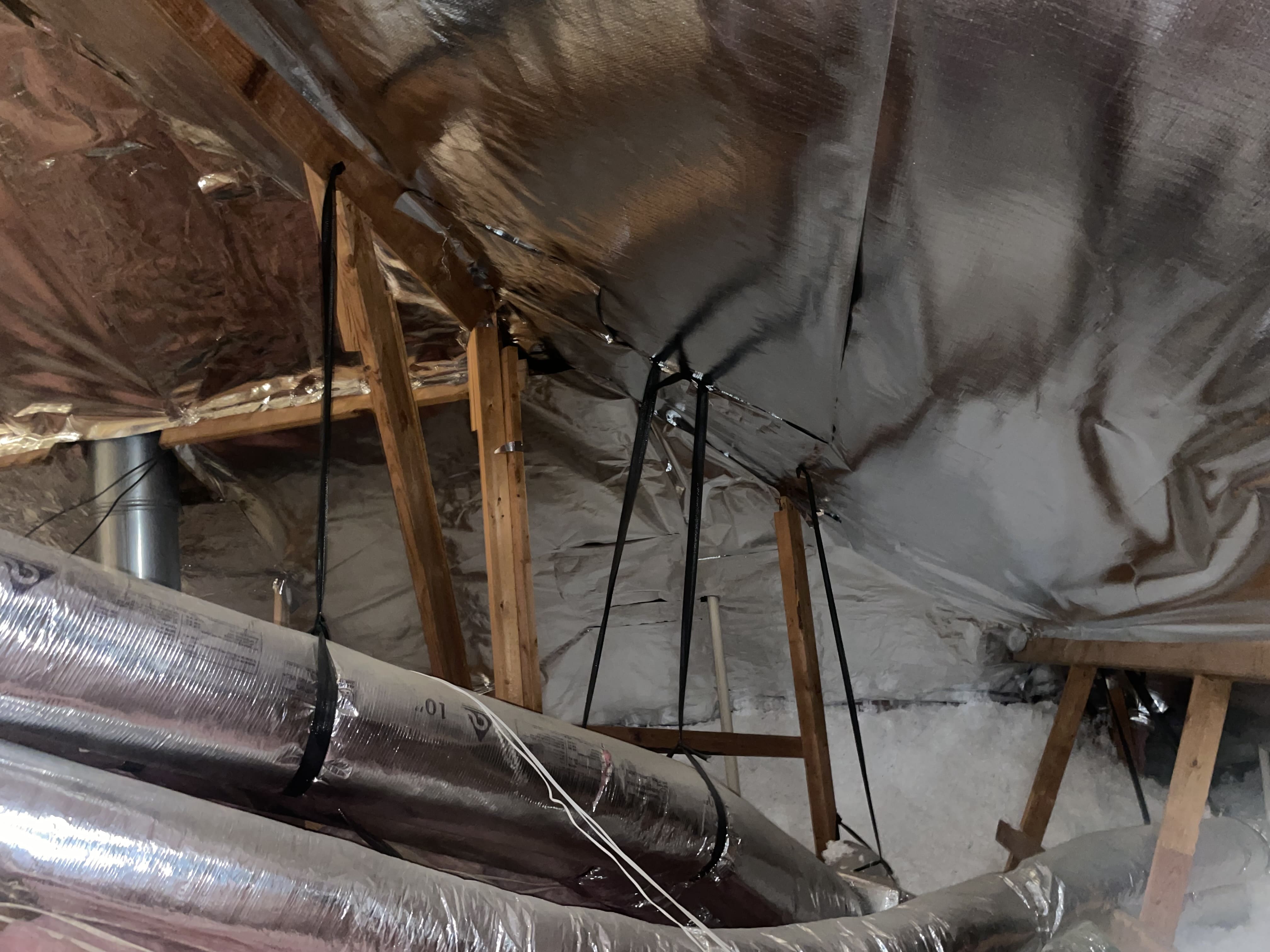Radiant Barrier Vs Insulation: Which Is Better?
Wondering What Will Help Your Energy Bills The Most: A Radiant Barrier Or Attic Insulation? We’ll Look At The Pros And Cons Of Each.
Wondering what will help your energy bills the most: a radiant barrier or attic insulation? We’ll look at the pros and cons of each.
We all know how attic insulation works. It effectively seals your attic from moisture and heat, resulting in less energy consumption and enhanced health for your family.
However, there's something you need to know about insulation. Given the sweltering heat in the summer months, it can absorb the heat from the sun (radiant heat gain), then slowly transfer that heat to your home (heat transfer).
How do you stop your insulation from becoming a double-edged sword? Certified attic specialists recommend installing a radiant barrier.
A radiant barrier reflects the sun's rays away from your home, preventing your insulation from becoming another heat source. It keeps your house cool and your cooling costs at bay.
Is radiant barrier better than insulation? Before you conclude, read this article on Radiant Barrier vs. Insulation.
What Is A Radiant Barrier?
A radiant barrier or foil radiant barrier has a reflective surface that bounces away the sun's rays and reduces the radiant heat that enters your home. Yes, a radiant barrier works even underneath a roof. A radiant barrier is effective at reflecting 95% of radiant heat.
Experts strongly recommend installing radiant barriers when your house is under direct sunlight throughout the year or if the rooms and living spaces underneath the attic space become unbearably hot during the day.
"What about in winter or cold climates? Radiant barrier or insulation?" Radiant barriers not only reflect radiant heat but also serve a purpose on cooler days. It works alongside the thermal insulation to keep the warmth in and reduce heating costs. Think of radiant barriers as insurance on both hot and cold temperatures.
This may come as a surprise, but installing radiant barriers and other energy-saving measures helps save the environment too. The higher energy efficiency a home has, the less the carbon dioxide it releases into the atmosphere, the less your household contributes to climate change.
What Is Blown-In Insulation?
Blown-in insulation is a type of insulation that typically uses recycled fiberglass as the insulation material. If you're looking for eco-friendly insulation that will cater to your irregularly sized or shaped attic and tight spaces, blown-in insulation is the right choice. Certified attic specialists will blow the fiberglass insulation using a blowing machine into your attic floor, walls, and ceilings.
As with other insulation types, blown-in insulation effectively lowers your energy bills by reducing your heating and cooling needs. It helps maintain the preferred temperature in your home, creating less work and strain on your HVAC system.
Perhaps you have blown-in insulation installed, and you're wondering about adding more insulation instead of installing a radiant barrier. You've heard of fiberglass batts with foil facings that function as a radiant barrier. Certified attic specialists do not recommend this solution as the fiberglass batts with foil facings are prone to moisture and lose effectiveness quickly when they become dusty. Moisture means mold and mildew growth which threatens your family's health.
Which Is Better: Insulation Or Radiant Barrier?
Professionals would advise you to get both. Installing a radiant barrier with fiberglass insulation is like getting the best of both worlds. When you install both, you maximize your energy savings and your family's comfort.
Radiant barriers are your home's first line of defense against the sun's rays. It is powerful in reducing radiant heat and restricting conductive heat flow. In simpler terms, a radiant barrier decreases the sun's heat that penetrates your home and is not very good at transferring heat but excellent at deflecting it.
On the other hand, you cannot do away with blown-in insulation. Insulation seals your attic from pollens, allergens, mold spores, and other threats. While it does let some heat flow, it still slows it down before reaching your living spaces and rooms. Radiant barriers complement and reinforce insulation this way.
Experts suggest adding a radiant barrier when your insulation is 15 years old and replacing insulation if it is over 15 years, along with installing a radiant barrier.
Professionals warn against installing spray foam insulation directly with radiant barriers, however. This closeness will negate the function of the radiant barrier because air space is required for the radiant barrier to work correctly in reducing radiant heat.

